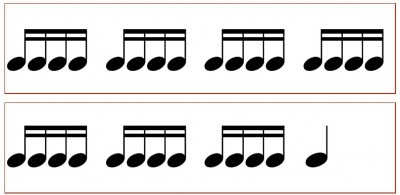Some folks say that our business is “saving lives.”
Sometimes they’re kidding, sometimes not. Either way, the problem with this kind of attitude is simple: whenever you’re not saving lives, you won’t feel like you’re doing your job. And it takes about ten seconds into an EMS career before you discover that most of what we do isn’t saving lives.
Because most of our patients aren’t in danger of dying. And many of the ones who actually are will die in days, weeks, or years — which doesn’t mean that our care doesn’t matter, but it’s hard to call it a “save” when they were going to survive your time together no matter what you did. That’s just not what’s going on.
I realised that my training was useful in less than ten percent of the calls, and saving lives was rarer than that. After a while, I grew to understand that my role was less about saving lives than about bearing witness. I was a grief mop. It was enough that I simply turned up. (Bringing Out the Dead)
In the field, we usually understand this fact. But for some reason, when we conduct research, we forget. Read ten studies on prehospital medicine, where interventions, methods, or systems are tested, and in nine of them, the primary outcome examined will be mortality. Did more patients survive than otherwise would have? Did the thing we’re examining save any lives?
Obviously, this is an important consideration. Saving lives is good! But as we’ve already agreed, most of our care isn’t lifesaving, no matter what happens. Lives are simply not at stake. Asking about mortality improvements in ankle fracture patients is like asking how we can reduce the number of car thefts on the moon.
If someone’s not calling us because they’re dying, what’s their problem? Usually, they’re ill or injured, but not so badly that their life is endangered. They still need medical care, but its purpose will be to reduce their long-term morbidity, as well as their short-term pain and discomfort. It will be to maintain the optimal function of their limbs, the greatest cardiac output, the most neurological capacity — to make sure the person who walks out of the hospital can still do most of the things he wants to do, needs the fewest meds, is fated for the fewest procedures, and experiences the least chronic agony.
And when someone’s lying in front of us, moaning from a broken femur, or turning green from nausea, we can help with that too. Many, many of our patients have a chief complaint involving pain or some sort of discomfort, and although we typically look at it as a diagnostic sign suggesting an underlying problem — which it is — odds are good that the patient is more interested in feeling better than in a diagnosis. We can help with that (at least, the medics can). Hell, even us BLS fellas can relieve some stress, grief, and psychological distress with a calming demeanor and sympathetic word.
The fact is, it’s shortsighted and wrong to only see mortality when we’re talking about our work, and it leaves out a huge amount of what we do. If we never did anything but relieve terrible pain, and never saved a single life, we’d still be performing a wonderful service. Our mortality myopia has gotten so bad that many providers need to be told that pain is associated with greater morbidity and mortality (which it is) before they’ll even consider managing it as a priority! Pain is the ultimate subjective experience; when it’s yours, nothing could be worse, but when it’s someone else’s, it’s hard to give two craps. As Dr. Jeff Guy likes to quote,
We must all die. But that I can save him from days of torture, that is what I feel is my great and ever-new privilege. Pain is a more terrible lord of mankind than even death itself. (Albert Schweizer)
What this all means when it comes to medical research is you’re going to see many, many studies that determine a certain intervention “no better than placebo,” when what they really mean is it didn’t save anybody’s life. But that doesn’t mean it didn’t help anybody. There could have been profound effects on short- and long-term morbidity, and you could have made someone far more comfortable and happy. That won’t be reflected in those numbers. The fact is, it’s difficult to study these things, because they’re harder to quantify than mortality, and they seem less important (perhaps they are), so you just don’t see as much research that seriously examines such outcomes.
So although I’m a strong proponent of evidence-based medicine and turning to research to further our standard of care, the answers won’t always be there. Partly this is the fault of the folks who do the studies, and partly it’s an inherent limitation to the scientific method. Either way, it means that the literature needs to be supplemented with our personal experience and the experience of our colleagues, and even then, we may not have the whole picture. It’s a drag, but that’s how it is.
Personally, I like to see my job as first to reduce acute suffering, second to manage permanent or long-term morbidity, and lastly to reduce mortality. This is a ranking born of frequency, not of urgency; obviously, if someone’s actually dying on me, saving their life takes precedence. But it’s no sweat off my back if they’re not, because there’s still a great deal more to be done. And it’s a shame that the research can’t always help get us there.
More on Reading Research: Diagnostics


Recent Comments